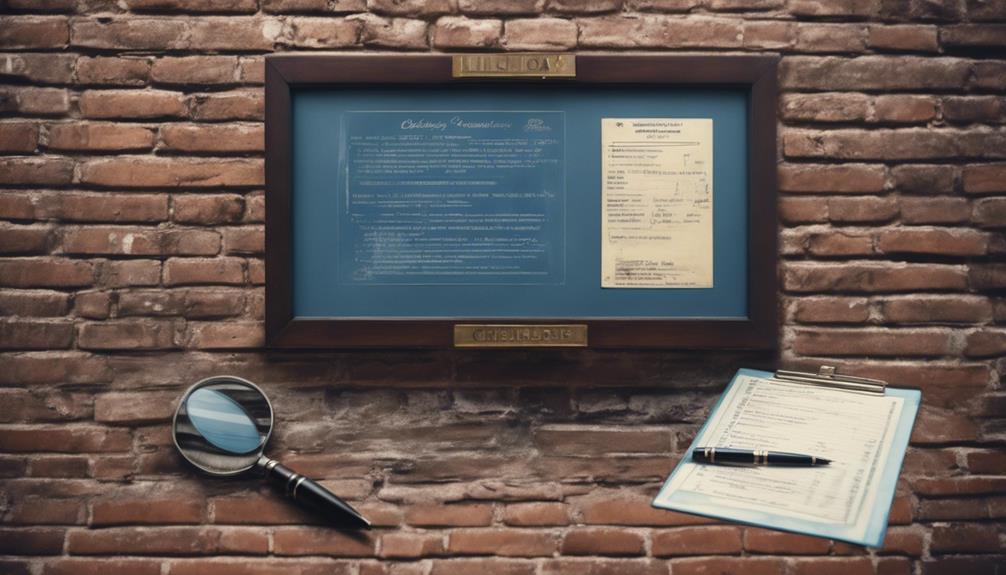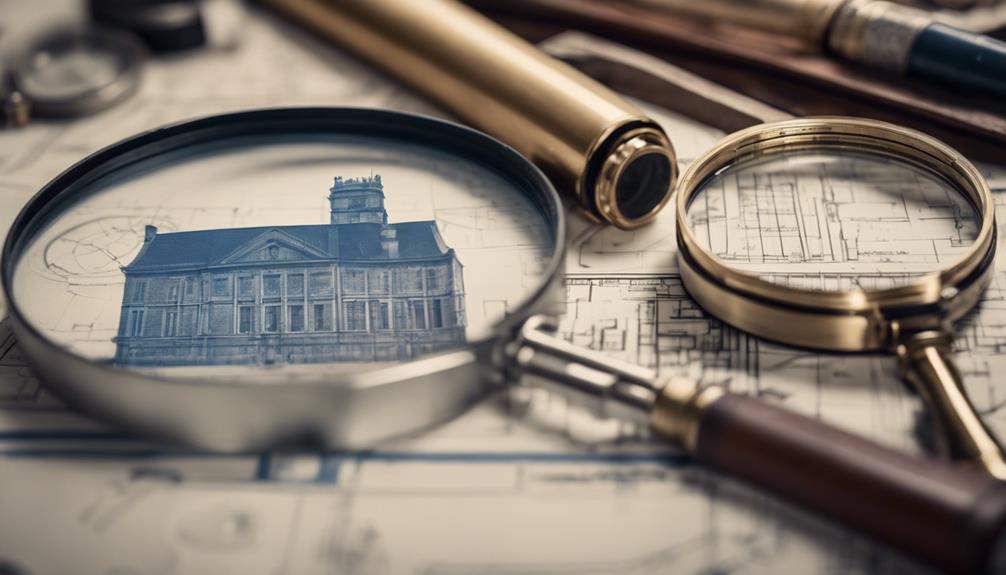When we look at old buildings, we must follow certain rules. These buildings must be at least 50 years old. Their importance is judged by how old they are, how well they've been kept, and their place in history.
The Federal Historic Preservation laws tell us how to keep these buildings safe and maintained. Plus, we need to make sure they meet safety rules found in building codes. There's also a guide from the Secretary of the Interior that helps us keep the building's historical feel.
Special rules are there for places like parks that have historical value. These strict rules help us protect our history.
There's a lot to learn about this, so why not keep reading?
Key Takeaways
- Laws for looking after old buildings come from Federal Historic Preservation. They also follow local building rules.
- A group in Texas, called the Texas Historical Commission, makes sure people follow the right steps to take care of old buildings.
- Guidelines from the Secretary of the Interior and National Park Service help decide how important an old building is and what it should be used for.
- There are also rules, like the Texas Accessibility Standards and the Americans with Disabilities Act, to make sure everyone can safely use these buildings.
- The area around the building, called the Cultural Landscape, is also important. Rules from the Secretary of the Interior guide how to keep this area preserved.
Understanding Historic Property Significance
Understanding the importance of an old building or place isn't too hard. You need to consider three main points: how old it is, how well it's been kept up, and what part it plays in history.
Usually, a property has to be at least 50 years old to be considered historic. This means it has been around for a long time and has seen a lot of history. It's like a time machine that takes you back to how things used to be.
Next, look at how well the property has been maintained. If the original materials and design are still there, it's like a real-life history book. It shows us the kind of building methods and materials people used in the past.
Lastly, consider the role the property has played in history. Maybe it's linked to a famous person or event, or maybe it represents a certain period in history. These connections make us feel part of a bigger story and help us appreciate our history.
Historic Building Designation Types
Let's dive into the fascinating world of different types of historical building labels.
From the 'National Register of Historic Places' to the 'Historic Texas Cemetery Designations,' each has its own special requirements and importance.
It's crucial to understand these differences if you want to navigate the world of rules and standards for evaluating historic buildings.
Understanding Historic Designations
Ever wanted to know about the various kinds of historical labels given to places and buildings? There are three main types: National, State, and Local. They're like special badges that show how important these places are.
First, let's talk about National and State Historic Designations. These labels are given to places that are important in our country's history or have rare architectural styles. Usually, these places are at least 50 years old and still look like they did when they were first built.
Then, there are Local Historic Designations. These are given by cities or towns to places that have a special meaning to local history. This helps make sure that these places are kept safe and preserved.
These labels aren't just for show. They remind us of our past and teach future generations about history. It's like being part of a giant storybook that's bigger than any one of us.
Types of Building Classifications
When we explore the different ways we label old buildings, we see a bunch of different names. These include the National Register of Historic Places, Recorded Texas Historic Landmarks, State Antiquities Landmarks, National Historic Landmarks, and Historic Texas Cemetery Designations. Each one is special in its own way.
The National Register of Historic Places is a list of places that are important because of their history or architecture, and it covers the whole country. The Recorded Texas Historic Landmarks are places in Texas that are important because of their history and the way they look.
State Antiquities Landmarks are places in Texas that are protected by law and have to be on the National Register list. The Historic Texas Cemetery Designations are given to cemeteries that are at least 50 years old and have a historical connection, but don't have any rules attached to them.
Guidelines for Historic Properties

Learning about the rules for taking care of old buildings is super important if we want to keep them nice and preserved. You need to have a real love for this work because these buildings are a big part of our history.
The rules from the Federal Historic Preservation are like a map that guides us in this work. They tell us how to preserve, fix up, restore, or even rebuild these old buildings. But remember, these aren't just any buildings—they're a direct connection to our past and need lots of love and care.
The Texas Historical Commission helps a lot with this. They make sure any work done on these historical buildings follows the rules and doesn't ruin their special qualities. It's not just about sticking to the rules, but also about being part of a group that values and wants to protect our history.
Implementation of Interiors Standards
Let's talk about how the Secretary of the Interiors Guidelines are used. These rules help us take care of old buildings and places. Working with these places needs a lot of love, hard work, and understanding of our past.
The National Park Service made these guidelines. They're like a map that shows us how to fix up, restore, or rebuild historic places. They're really useful in Texas, where you have to follow these rules to work on old places.
These guidelines are easy to follow. They help you figure out how important a building is, what shape it's in, and what it should be used for. They also help you understand how to keep a building looking old but make it safe and useful for today.
But don't forget, these rules are more than just instructions. They show how much we care about saving our history. When you use them, you're not just fixing a building. You're helping tell the story of our past.
Navigating Building Codes

If you're working on a project with an old, historical building, you need to know your way around building codes. These are rules set by local government to make sure buildings are safe. You don't have to figure this all out by yourself. Local code officials are there to help you understand these rules.
Are you facing problems that are specific to your project? There's help for that too. Boards called Variance and Appeal can help you find ways around these problems while still following the building codes. They can offer different solutions for your project.
When working on historical buildings, it's important to make sure that everyone can get around easily. Laws like the Texas Accessibility Standards and the Americans with Disabilities Act help make sure of this.
ADA Compliance for Historic Buildings
We're about to start a balancing act!
We need to make sure your old building is ADA friendly – that means anyone with a disability can use it easily. But, we also want to keep its history alive.
It's more than just adding ramps or handrails. We've to carefully study all the ADA rules and make changes that work for everyone without harming the building's historic charm.
Let's take this task on together, thinking about each step with care and accuracy.
Understanding ADA Requirements
Understanding ADA rules is important, especially for old, historic buildings. ADA, or Americans with Disabilities Act, makes sure that people with disabilities can access all buildings without problems. So, what does this mean for historic buildings? It means that we need to make sure these buildings can be accessed by everyone, but we also need to keep their history alive.
There's a law called the National Historic Preservation Act. It says that buildings on the National Register of Historic have to keep their history, but also be accessible. This might sound hard, but it's really about finding a balance.
So, how do we do this? We need to think about the special problems old buildings might have. Then, we need to plan changes to these buildings. These changes should let everyone access public areas and facilities. But, we also need to make sure we don't change the building's history too much.
Implementing Accessible Modifications
Making old buildings easy for everyone to use is a tricky job. It's like trying to balance on a tightrope! You've got to make sure people with disabilities can get around easily, without ruining the building's old charm.
So, how do you do it? You need to think about adding things like ramps, lifts, or making doorways bigger. These changes will help everyone enjoy the building, no matter their abilities.
But here's the catch – you can't just make any old change. The building's history is just as important. That's why you need help from experts who know about preserving old buildings. They'll help you make changes that won't mess up the building's history.
The final goal? A beautiful old building that everyone can enjoy and that still has its historical charm.
Cultural Landscape Treatment

Cultural landscapes help us remember and value our past. These can be historic places, gardens designed by people, or land that tells stories about our culture. To keep these places safe, we follow a set of rules made by the Secretary of the Interiors for taking care of old properties.
We think about how important each landscape is, what condition it's in right now, and what we want to do with it in the future. We use different ways to take care of each landscape because every one of them is unique.
Safeguarding these places isn't just about protecting the past. We also use methods that are good for the environment. This way, we make sure these landscapes will last for future generations to enjoy.
To do this well, we've special rules for cultural landscapes. These rules guide us on how to check, record, and keep these special historic places safe. This way, everyone who's taking care of these landscapes can work together. Remember, these landscapes aren't just pieces of land. They're a part of our shared history, and it's up to us to keep them safe for the future.
Conclusion
You've sailed through the tricky journey of learning about old building assessments. Now, you're a pro at figuring out the importance of a building, the different labels it can get, and the rules to follow.
You've also done a deep dive into the rules for inside spaces, building safety codes, and making spaces accessible for everyone. You've even taken a look at how to take care of cultural landscapes.
So, now you're ready with all this knowledge and excitement to help protect our shared past. Don't stop now, continue growing and saving our history. Remember, every old building has its own tale, and you're the one who can share it.


